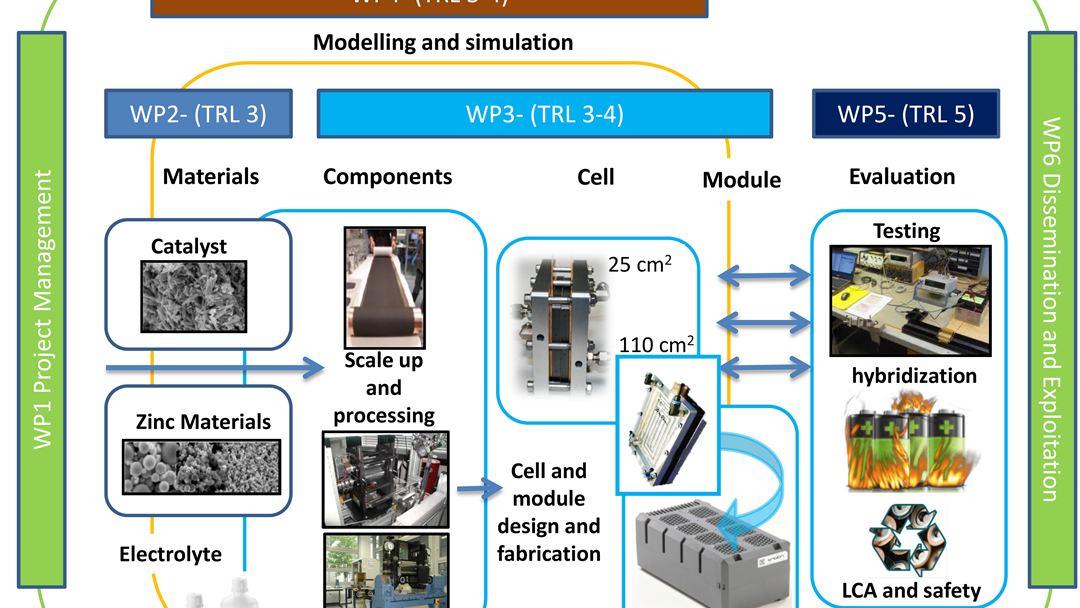Project Overview

In order to more efficiently enable the use of distributed and intermittent renewable energy sources, the ZAS project will develop a rechargeable zinc-air battery system for efficient and cost effective stationary energy storage. The new battery system is expected to have an energy density higher than 160 Wh/kg and 260 Wh/L, while at the same time the reversibility exceeds 1000 cycles at 80 % Depth of Discharge (DoD). In addition, ZAS will provide a system that performs safely at a cost lower than 250 €/kWh.
Sub objectives (SO):
- SO1: Optimized environmentally friendly nanostructured electrode and electrolyte materials that are highly resistant towards cycling degradation and suitable to mass manufacture at low cost. The development will be done in close collaboration between experimental and computational approaches.
- SO2: A zinc-air cell structure based on novel electrolyte and electrode materials and that is possible to cycle at least 1000 times.
- SO3: Optimize zinc-air battery performance by the use of multi-physics cell modeling based on ab-initio material calculations and electrode design.
- SO4: Simulate and validate the feasibility of hybrid energy systems in which zinc-air batteries are used as storage for geographically decentralized renewable energy power generation systems.
- SO5: Establish a realistic exploitation and business plan that outlines the techno-economical feasibility of developing this type of technology in Europe, by optimizing the whole process starting from a proof of concept (TRL 3) to technology validation (TRL5).
Project structure
In order to achieve the main objective of the project of developing a rechargeable zinc-air battery system, the project is constructed in a few key activities, which are closely linked and carried out in an iterative process.
In the first phase of the project the focus will be on the technological issues including:
- Building truly complete ladders of models from atomic scale material design to macroscopic cell design for a rechargeable zinc-air battery
- Developing new nanostructured electrodes and novel non-carbon gas diffusion layers
- Developing alternative electrolyte systems (aqueous and non-aqueous)
- Optimizing electrode geometries and structures as a function of the cell design
In the second phase, the consortium will also focus its efforts on
- Defining cell specifications and operating conditions
- Assess life-time under simulations of real environment
- Evaluate the integration into a hybrid energy supply system
- Performing techno-economic assessment
A coherent Work Plan with its corresponding main activities has been designed and consists of 6 work packages:
WP1. Project Management will provide the project with efficient management, facilitating and monitoring the partners' cooperation to ensure a successful execution of the project, as well as being responsible for communication with the EC.
WP2. Material Development will concentrate its effort on generating optimal, scalable and cost efficient nanostructured materials and electrolyte.
WP3. Materials integration, optimization and feasibility will deal with the lab scale validation to assess materials integration, performance, lifetime and safety.
WP4. Modeling and simulation will develop a detailed understanding of the rate-limiting reaction and transport processes and predict improved electrode materials and structures.
WP5. Specifications, LCA and Validation will focus its activities on the technical and economical feasibility of the battery (system) through simulations of real environment.
WP6. Dissemination and Exploitation will spread the knowledge created by ZAS to a wider community for potential use of project results taking into account the protection of intellectual property rights (IPR).
